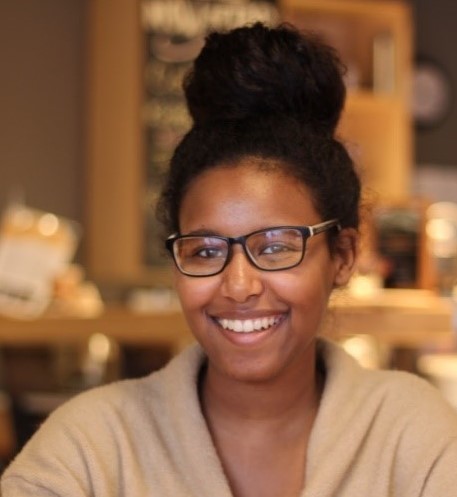
Pan-Africanism, Afro-Futurism and the Dismantling of Eurocentric narratives in Marvel’s Black Panther
By: Ililli Ahmed
“There is danger in a single story”
This quote, spoken by Nigerian novelist Chimamanda Ngozi Adichie at her famous 2009 TedTalk, introduced her criticism of the West’s homogenization of African countries, while questioning media representation depicting the continent as poor or undeveloped. Fortunately, keeping in mind the important message delivered by this impactful sentence, Marvel’s “Black Panther” has taken immense strides in changing these narratives and has given Africa and its diverse people the story that we deserve. Set in the African nation of Wakanda, not only does the movie depict an Afro-futuristic country, un-exploited by imperialism or colonialism, it also provides an outlet through which people of African descent can imagine the potential of such an African country, filled with Pan-Africanism and Afrocentrism. In addition to this, “Black Panther” also represents dark skinned Black women with deserved grace and strength, while addressing critical issues facing Black communities, such as the silent divide that exists between Africans and African Americans, and the amount of pain and misogyny among Black Americans.
The prosperous Wakanda is led by newly crowned King T-Challa, who doubles as the heroic Black Panther. As king, he oversees his kingdom’s affairs and facilitates the nation’s use of their greatest resource, a rare and precious metal called Vibranium. Producer Ryan Coogler establishes this setting by introducing the movie with a creation story: in it, the beginnings of Wakanda are shown, as five African tribes fight over a meteor containing Vibranium. The origins of the Black Panther are also described here: to quell the feuding tribes, a warrior ingested a heart shaped herb, affected by the precious metal, and united the ethnic groups, with the exception of the Jabari tribe, who retreated to the mountains. And so, the Pan-African dream of Wakanda was born.
As time went on, and as Wakandans began to use their aforementioned Vibranium in order to create advanced technology, they watched as White Europeans began enslaving countries on Africa’s western coast, and witnessed these colonizers disrupt the lives of Africans around the continent, sparking wars and destabilizing entire governments and economies. In order to protect themselves, the people of Wakanda created a shield from the outside world, helping them pose as a developing nation.
While I will avoid spoiling the entirety of the film for those who have yet to see it (watch this movie ASAP!), I can, thankfully, get into “Black Panther’s” many themes spoiler-free. The first theme has already been mentioned, but bears repeating: Wakanda is the embodiment of an uncolonized, un-exploited country that has not been forced to subscribe to Eurocentrism, giving the nation a chance to develop its own economy, government, society and sense of identity without the negative effects of white cultural imperialism. As actress Lupita Nyong’O, who plays a Wakandian operative in the film, has stated, “Wakanda is a re-imagination of what could have been possible,” and it has come to represent the liberating ability for an “African country to realize itself, FOR itself.”
Another important theme found in the movie is that of Pan-Africanism. Defined as the “unified bond belonging to all indigenous inhabitants or descendants of Africa,” the film is packed with odes to diverse African cultures, touching all corners of the continent. Igbo masks, Maasai beadwork, Basotho blankets, Mursi lip plates, Malian architecture: you name it, Black Panther has it. The majestic portrayal of authentic African garments, traditions and cultures is nothing short of heartwarming, and means the world to many, including a young Oromo woman such as myself. On an equally important note, Wakandan beauty standards celebrate natural hair, baldness and dark skin…the exact opposite of what Eurocentrism deems to be beautiful, and is, thus, a powerful display of natural Black beauty that is embodied in every “Black Panther” character.
With this, not only are Eurocentric beauty standards irrelevant in this film, but the movie also features amazing feminist portrayals of Wakanda’s female leads: Nakia, a Wakandan spy played by Lupita Nyong’O, has a fighting spirit but a strong moral compass. These same warrior-like abilities are found in the General of the Dora Milaje, Okoye. Commanding an all-female army, which is possibly based off the N’Nonmiton or Amazons of Dahomey (modern day Benin), Okoye is given an important ranking in Wakandan society and decision making. On the other hand, the former Queen of Wakanda, Ramonda, played by legendary actress Angela Bassett, is fiercely dedicated to her son and to her country, and commands honour with respect and dignity. Finally, Shuri, Princess of Wakanda, played by Letitia Wright, is the essence of Black innovation and is the biggest reason why Wakanda is the Marvel Universe’s most technologically advanced society. The use of dark-skinned Black women as focal points to the film’s plot and the matriarchal structure that they represent in Wakanda is testament to those of many Indigenous African societies, while also displaying the importance of giving Black women platforms within Black spheres, and understanding the necessity of alliances between Black men and women.
If this wasn’t enough, “Black Panther” also does a wonderful job of addressing an internalized tension that can be found within Black communities: that of the existing stand-off between African Americans and Africans. Having witnessed this with my own African family in the United States, many Africans believe that African Americans are not “African” enough, and as a result, often look down on them as lesser than. On the other hand, Black Americans can poke fun at traditional African cultures, languages and accents, due to feelings of having a severed bond with Africa, a negative effect of the Trans-Atlantic slave trade. Thankfully this is addressed throughout the film in a masterfully intertwined plot. Without spoiling anything, I will say this: protagonist King T-Challa and antagonist, Erik Killmonger will come to embody this standoff, as the latter questions Wakanda’s reasoning behind purposefully ignoring the plight of African Americans in favour of self-preservation. With this, western imperialism and misogyny within African American communities, used as a de-stabilizing tactic by white oppressors, is also seen in a stark contrast to the functioning of Wakandan society. Once again, this is a key part of the film’s Pan-African theme and is something that viewers should keep an eye on, especially considering this conflict’s heartfelt, in-depth and sincere resolution.
To conclude this (long) analysis, I hope that “Black Panther” viewers note the above-mentioned themes that this movie has shed light on, all in hopes of changing so many structurally ingrained and oppressive narratives. Still, as Black History Month comes to a reluctant close, it is equally as important to recognize the impact that this film will have on the future. Now with the biggest February opening in history and the the second-highest grossing opening of all time, already have we seen waves of young black people finally feel authentically represented on the big-screen, and not only has this changed their self-perception for the better, but “Black Panther” has filled a hole in the hearts of so many Black people…one that we didn’t know was there.
About the writer
Ililli Ahmed is a 12th grade student who loves to listen to Frank Ocean, write and watch “The Get Down.” In the past, she’s written articles for Radio-Canada, and is a regular youth contributor for ‘Black Ottawa Scene.’ Ililli is also co-president of many clubs, such as her school’s Feminism and Black History Month Clubs. You can contact her at [email protected].

